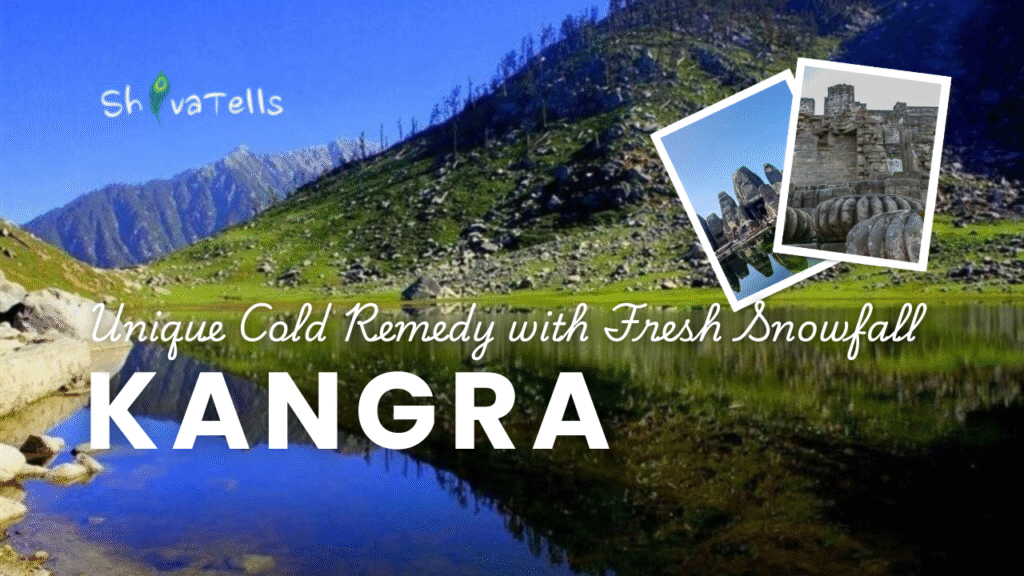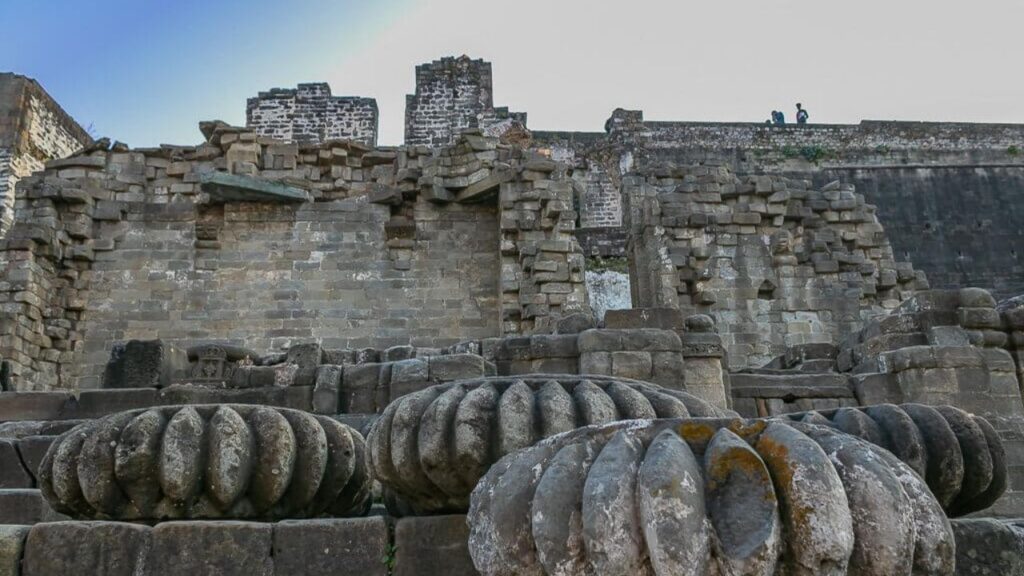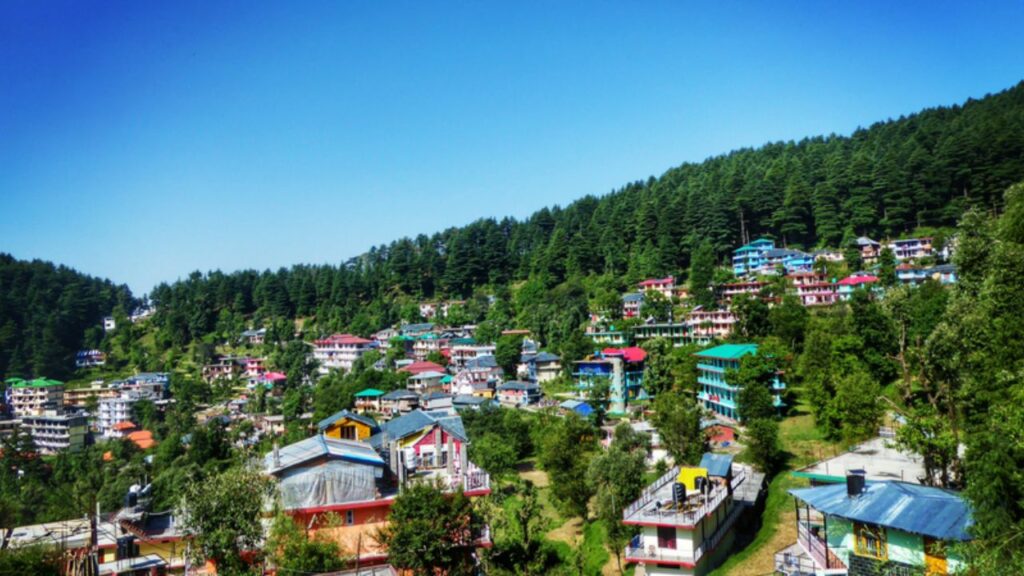Have you ever heard of someone recommending snow as a cure for cough and cold? Yes, snow—the very thing we associate with chills, winter, and freezing temperatures. The kind of thing we wrap up against with mufflers and woolen socks. But in a remote Himachali village in the Kangra Valley, snow becomes a surprising healer.
Let me take you to that moment. It was a biting cold day. The kind where even the trees seem to shiver in silence. I had been travelling in Himachal for over a week—shooting stories, climbing hills, talking to villagers, and soaking in that raw Himalayan air. But slowly, I started feeling the signs—itchy throat, slight fever, congested chest.
I knew it. The cold had entered. I was down with a cough and fever.

Table of Contents
A Surprising Offer in the Snow
Wrapped in layers and blowing into my hands, I reached a small roadside tea stall in a village near Kangra. As I sat sipping hot chai, a local Himachali woman, with a woolen shawl and bright, knowing eyes, joined me. We started chatting. I told her about my cold.
She looked up at the hills, then at the soft fresh snow that had just fallen the night before. Without any hesitation, she picked up a handful of that snow and handed it to me.
“Eat this snow,” she said.
I blinked in surprise. “Are you serious?” I asked, coughing again.
“Yes,” she nodded. “My whole chest is congested with a cold, that’s why I’m telling you. If you eat this, you’ll be completely fine without any medicine, because its inherent property is actually warm.”
Now that was the opposite of everything I had heard. Snow and warm? That too during fever? She continued, “The more snow you eat, by evening—or at least by tomorrow morning—you’ll be okay. Your chest will be completely clear, and all the phlegm will be out.” Then she paused and added with a smile, “It’s your responsibility, but yes, do eat it.”
Trying Snow Cold Remedy—At My Own Risk

I was skeptical, of course. But when you’re in the middle of the mountains, surrounded by people who have been living here for centuries, you begin to trust their way of life. These aren’t quick Google searches or textbook prescriptions. These are time-tested remedies, passed down from grandmothers to mothers to daughters—quietly and confidently.
So, I did what she said. I tried it. I scooped up a small handful of fresh, untouched snow, and slowly let it melt in my mouth. It was clean, light, and somehow… soothing. I repeated the same once again, just a little more.
But just to be safe, I also kept drinking my kaadha—a strong decoction made of ginger, tulsi, black pepper, cinnamon, and honey. I didn’t stop that.
What Happened Next?

I went to sleep that night unsure of what to expect. Would the cold worsen? Would I wake up with a deeper cough? But to my surprise, the next morning my chest felt lighter. My throat wasn’t as scratchy. The fever hadn’t spiked.
And by the second day, I was back on my feet—camera in hand, chasing another story. Of course, I cannot say with full scientific proof that it was the snow alone. It could have been the kaadha, the rest, or the magical air of Himachal. But I couldn’t forget what she said—“Snow has warm energy.” It sounded poetic, and yet, in a strange way, it felt true.
Ancient Wisdom in Simple Words
In the villages of Himachal, life is simple—but the knowledge is deep. Remedies don’t always come from bottles and tablets. Sometimes, they come from nature, from observation, from trust in the body’s healing powers.
The idea of eating snow might sound risky to a city-dweller. We’re taught to fear the cold, to wrap ourselves in insulation. But here in the mountains, people live with snow, play in it, walk through it, and yes—eat it too. They believe that fresh snow, when eaten in the right condition, helps in cleansing the body, especially the chest and throat. And perhaps, there is something in that belief. After all, nature has a rhythm—and those who live closest to it often understand it best.
A Word of Caution
Before you start hunting for snow with a spoon in hand, let me say this clearly—try it at your own risk. Not all snow is clean. Urban snowfall can carry pollutants. You need to be sure it’s fresh, clean, and untouched by anything harmful. And if you’re severely sick or allergic, always listen to your doctor.
This story is not a prescription. It’s a reflection—of how different communities across India carry their own way of healing, rooted in the land they live in.
Final Thought
That woman in Kangra didn’t have a degree. But she had experience and intuition. Her suggestion came not from theory, but from personal practice. And that’s the beauty of travelling across India—you don’t just see new places, you learn new ways of seeing.
Sometimes, it’s through temples. Sometimes, through food. And sometimes, through a handful of snow offered with a smile. Would I try it again? Maybe. Would I recommend it to everyone? Only if you’re open-minded, a little adventurous, and respectful of local traditions.
Because here at ShivaTells, we don’t just collect destinations—we collect stories. Stories that surprise you, heal you, and remind you that India’s magic is not always in the famous. Sometimes, it’s in the quiet corners, shared by someone over a cup of chai and a piece of snow.
Read ShivaTells Stories –
- Exploring the Untouched Beauty of Spiti Valley in Himachal Pradesh
- Nalhota: A Hidden Treasure in Himachal Pradesh
Watch Travel stories –
